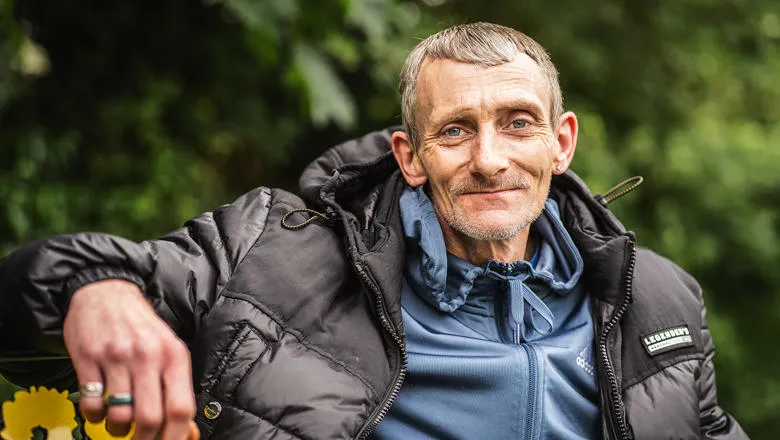Stigma is created and sustained through communication. Joking that someone "looks homeless" isn't harmless. While unintentional, it subtly perpetuates the incorrect and stigmatising belief that people experiencing homelessness are all disheveled or unkempt. Our research shows that stigmatising ideas about homelessness often hide in plain sight and perpetuate through everyday comments, humour and casual remarks. We all need to play a role in being careful in our communication and challenging the everyday normalisation of prejudice.
Dr Apurv Chauhan, Lecturer in Social and Cultural Psychology at King’s IoPPN and co-author of the report and checklist
03 June 2025
Talking about homelessness: new report highlights how everyday language perpetuates stigma
King’s research underpins new Centre for Homelessness Impact report and guidance, highlighting how mindful use of everyday language can support efforts to end homelessness.

The report, published today by the Centre for Homelessness Impact, analyses how language and communication reinforce stigma associated with homelessness and offers evidence-based ways to write about or discuss homelessness in a non-stigmatising way.
It was written by Dr Apurv Chauhan and Professor Juliet Foster at the Institute of Psychiatry, Psychology & Neuroscience (IoPPN) at King’s College London.
Reviewing language on social media
The researchers analysed language commonly used to discuss people experiencing homelessness. They selected 4,505 Twitter posts (before it became X) by UK users that referred to homelessness, alongside a further 916 sentences featuring phrases commonly used in the homelessness charity sector and in UK newspapers. They excluded messages from suspected bots.
The posts and sentences were reviewed by a panel of people with lived experience of homelessness, working in pairs. 943 of these were deemed to be stigmatising or negative in tone by both members of a pair. The researchers examined these sentences to understand the basis of stigma associated with homelessness.
They found that people experiencing homelessness were assumed, implied or described to be different from others on the basis of appearance, hygiene, personal shortcomings, poor life choices and substance abuse. Descriptions also suggested people impacted by homelessness were of a lower social status and lacked human qualities.
The findings also highlighted that public conversations about homelessness are often reduced to rough sleeping, overlooking the many people living in temporary accommodation because they are at risk of homelessness, or ‘sofa surfing’.
Dr Ligia Teixeira, founding Chief Executive of the Centre for Homelessness Impact said: “When it comes to homelessness, the words we speak or write can actively perpetuate the problem many of us are trying to solve. Too often, without even realising it, we say things that further embed and entrench the stigma surrounding homelessness."
This report throws light on this issue and gives us helpful guidance on how to discuss homelessness in ways that challenge stigma, build support for ending homelessness and, most importantly, treat people experiencing homelessness as human beings with agency, complexity and dignity.
Dr Ligia Teixeira, founding Chief Executive of the Centre for Homelessness Impact
A checklist for using better language on homelessness
Drawing on their findings, the researchers have developed a checklist for people writing and speaking about homelessness to help them avoid inadvertently perpetuating harmful assumptions about people experiencing homelessness:
- Focus on the person, not their housing status. Refer to “people experiencing homelessness” or “people sleeping rough” rather than a “homeless man” or “rough sleepers”, to avoid defining them solely by their housing status.
- Mention homelessness when relevant. We often add that a person is homeless even when this detail is not pertinent. For example, “A homeless man was questioned by the police in relation to the incident.”
- Respect the dignity of people affected by homelessness. Using homelessness as a point of comparison, whether for humour or to illustrate failure, reinforces harmful stereotypes and trivialises a complex issue.
- Steer clear of negative stereotypes about hygiene, appearance, or behaviour. People experiencing homelessness from temporary accommodation, overcrowding to rough sleeping do not have common characteristics related to their appearance or other person-level variables.
- Make clear that homelessness is much broader than rough sleeping. Street homelessness is the most visible form of homelessness but is not the only, and certainly not the biggest, form of homelessness.
- Avoid implying that homelessness makes places unsafe or undesirable. Statements like “Homeless people are making the park unsafe” create unnecessary fear and reinforce negative stereotypes, rather than addressing the real challenges of homelessness.
- Check facts first if linking substance use with homelessness. It is important to avoid assuming or implying a causal relationship between substance use and homelessness.
- Recognise that substance use may be a coping mechanism rather than the root cause of homelessness. In many cases, people may have started a problematic use of alcohol and drugs to cope with their homelessness.
- Be cautious in representing responses to the challenge of rough sleeping as failing to meet social norms. For example, someone washing in a public fountain might not have access to proper sanitation facilities, and this behaviour is a practical response to their situation.
The report and checklist were developed by Dr Apurv Chauhan and Professor Juliet Foster at the IoPPN and funded by the Centre for Homelessness Impact.


